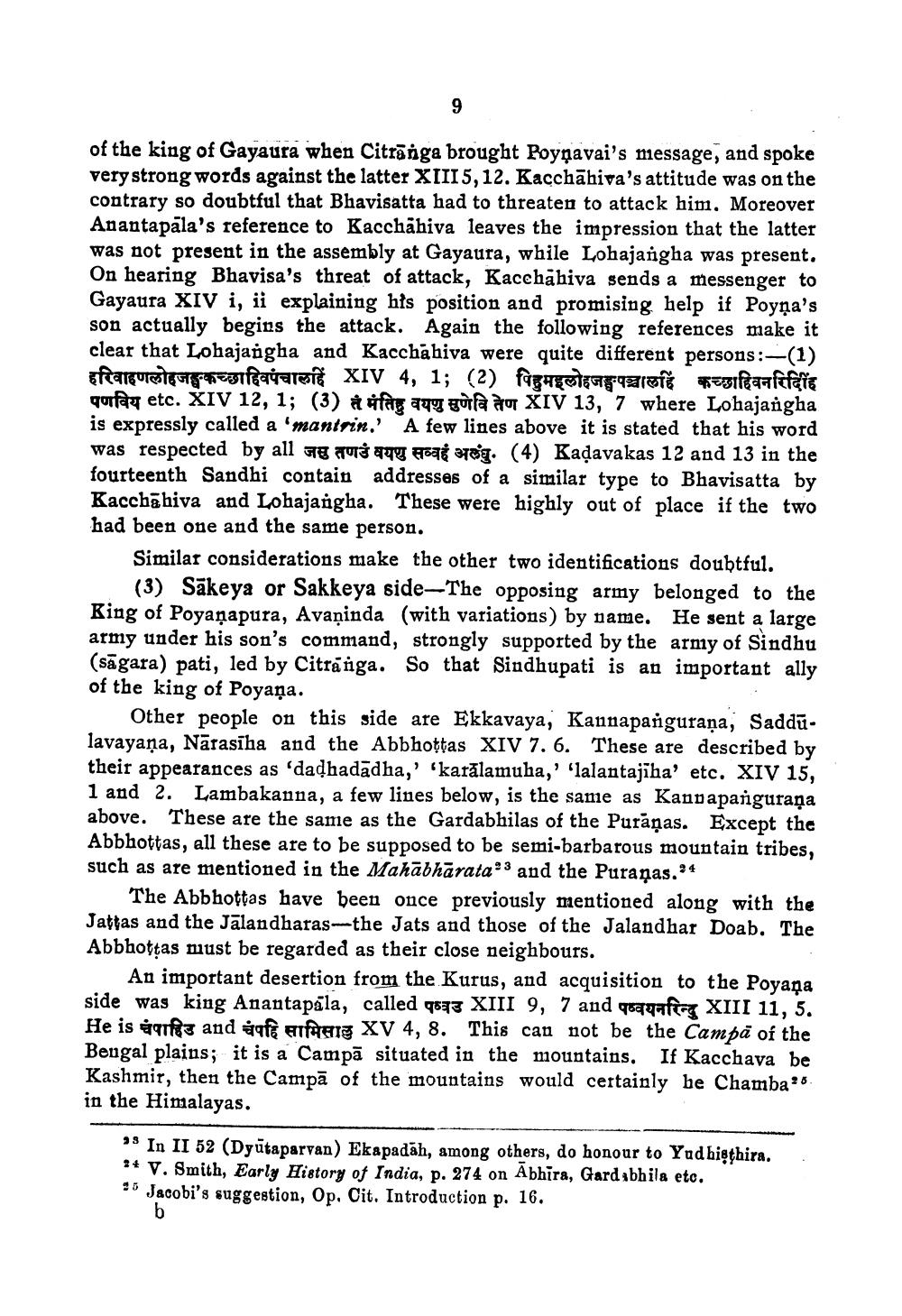________________
of the king of Gayaura when Citrānga brought Poyņavai's miessage, and spoke very strong words against the latter XIII 5,12. Kacchāhiva's attitude was on the contrary so doubtful that Bhavisatta had to threaten to attack him. Moreover Anantapala's reference to Kacchähiva leaves the impression that the latter was not present in the assembly at Gayaura, while Lohajangha was present. On hearing Bhavisa's threat of attack, Kacebābiva sends a messenger to Gayaura XIV i, ii explaining his position and promising help if Poyņa's son actually begins the attack. Again the following references make it clear that Lohajargha and Kacchāhiva were quite different persons:-(1) हरिवाहणलोहजङ्घकच्छाहिवपंचालहिं XIV 4, 1; (2) पिहुमइलोहजडपञ्चालहिं कच्छाहिवनरिदिह gofag etc. XIV 12, 1; (3) 8 of ang gulaator XIV 13, 7 where Lohajangha is expressly called a 'mantrin,' A few lines above it is stated that his word was respected by all at TTS AU ag tea. (4) Kadavakas 12 and 13 in the fourteenth Sandhi contain addresses of a similar type to Bhavisatta by Kacchahiva and Lohajangha. These were highly out of place if the two had been one and the same person.
Similar considerations make the other two identifications doubtful.
(3) Sākeya or Sakkeya side-The opposing army belonged to the King of Poyanapura, Avaņinda (with variations) by name. He sent a large army under his son's command, strongly supported by the army of Sindhu (sāgara) pati, led by Citranga. So that Sindhupati is an important ally of the king of Poyaņa.
Other people on this side are Ekkavaya, Kannaparguraņa, Saddūlavayana, Nārasīha and the Abbhottas XIV 7. 6. These are described by their appearances as "dadhadadha,' "karālamuha,' 'lalantajīha' etc. XIV 15, 1 and 2. Lambakanna, a few lines below, is the same as Kanpapaniguraņa above. These are the same as the Gardabhilas of the Purăņas. Except the Abbhottas, all these are to be supposed to be semi-barbarous mountain tribes, such as are mentioned in the Mahābhāratao3 and the Puraņas.94
The Abbhottas have been once previously mentioned along with the Jattas and the Jālandharas--the Jats and those of the Jalandhar Doab. The Abbhottas must be regarded as their close neighbours.
An important desertion from the Kurus, and acquisition to the Poyana side was king Anantapāla, called 9653 XIII 9, 7 and wagaf XIII 11, 5. He is igns and safe ATAFIS XV 4, 8. This can not be the Campă of the Bengal plains; it is a Campā situated in the mountains. If Kacchava be Kashmir, then the Campā of the mountains would certainly be Chamba28 in the Himalayas.
18 In II 52 (Dyūtaparvan) Ekapadāh, among others, do honour to Yudhiệthira. ** V. Smith, Early History of India, p. 274 on Abhira, Gard abhila etc. 26 Jacobi's suggestion, Op. Cit. Introduction p. 16.




